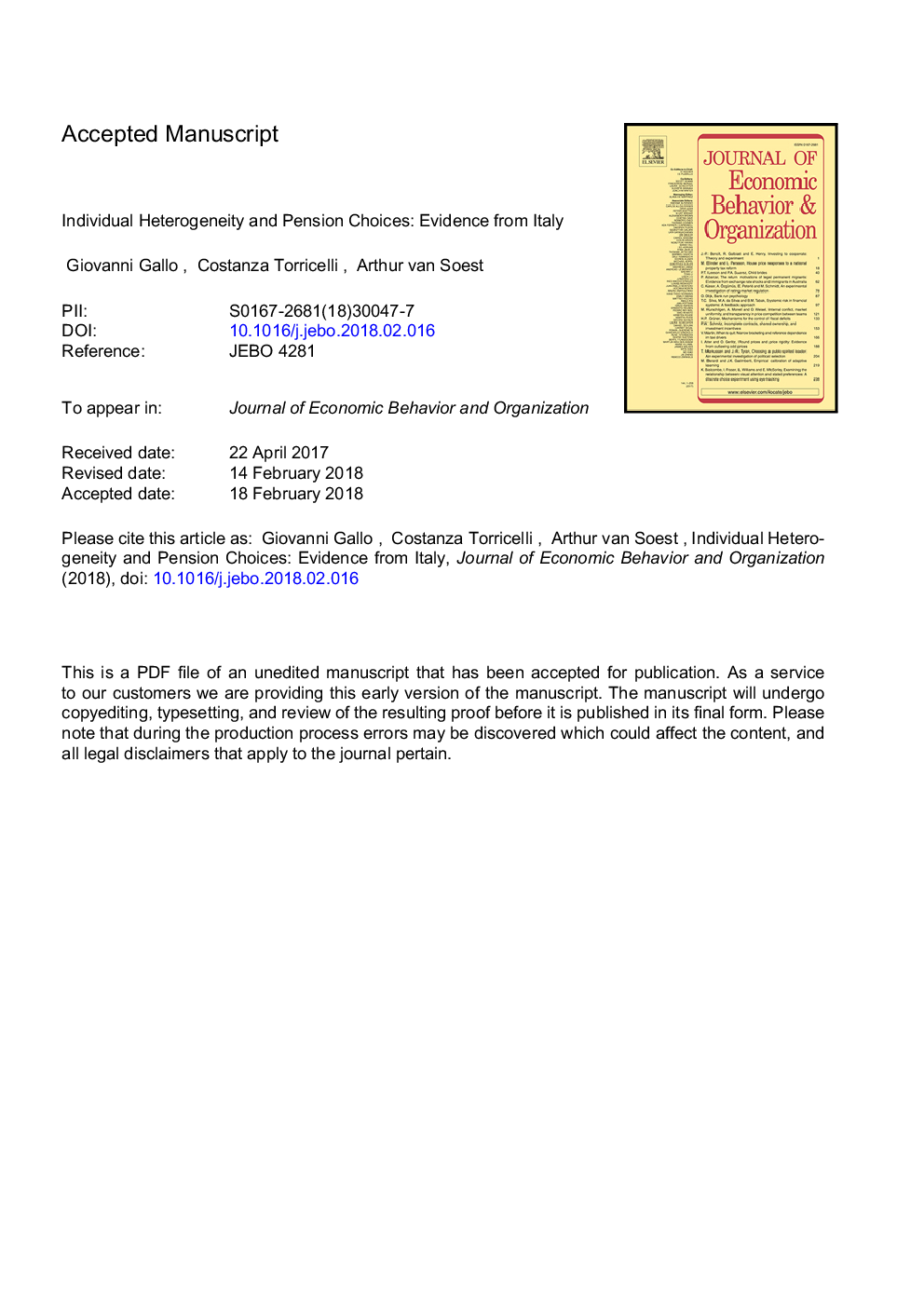| Article ID | Journal | Published Year | Pages | File Type |
|---|---|---|---|---|
| 7242628 | Journal of Economic Behavior & Organization | 2018 | 30 Pages |
Abstract
The 2007 Italian pension reform allowed transferring future severance pay contributions into a pension fund. Although this was accompanied by an information campaign advising employees to make the transfer, only a minority of them did so. We analyze the heterogeneity in employees' choices using micro panel data from the Bank of Italy household survey. Two are the main findings. First, the decision to transfer and pension fund participation after the reform are more likely for more (financially) educated and older individuals, with high household income and wealth, and less likely for female employees, in the South, and in small firms. Second, framing the analysis within the Elaboration Likelihood Model highlights that the cognitive processes underlying the decision on pension fund participation may be quite different. The decision consciousness is lower for employees working in small firms, where employers have an incentive to stimulate workers to deny the transfer.
Related Topics
Social Sciences and Humanities
Economics, Econometrics and Finance
Economics and Econometrics
Authors
Giovanni Gallo, Costanza Torricelli, Arthur van Soest,
